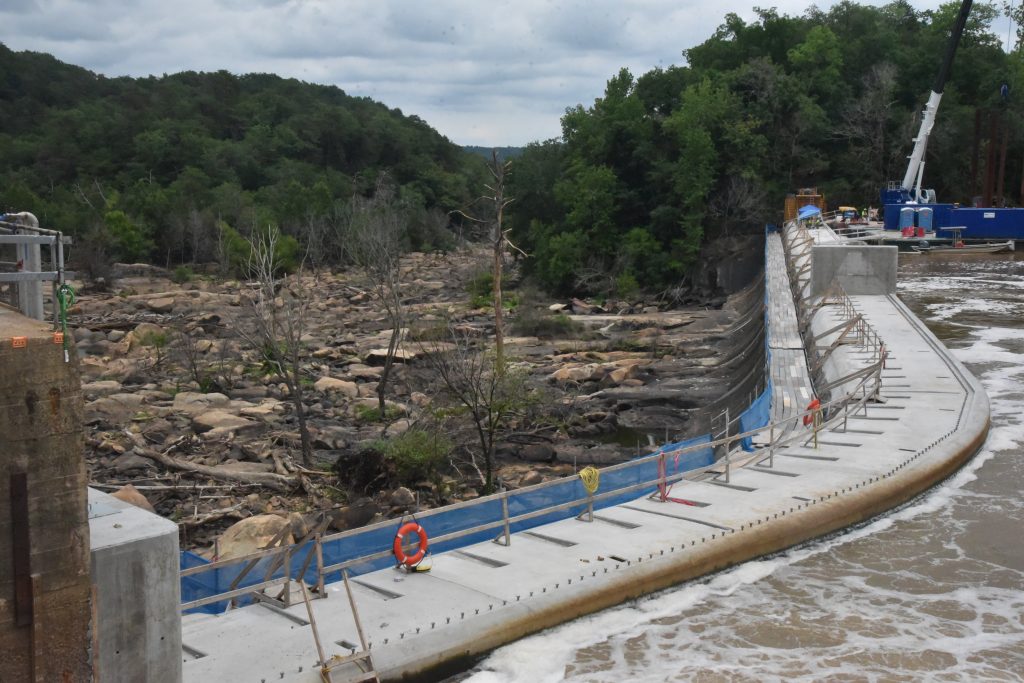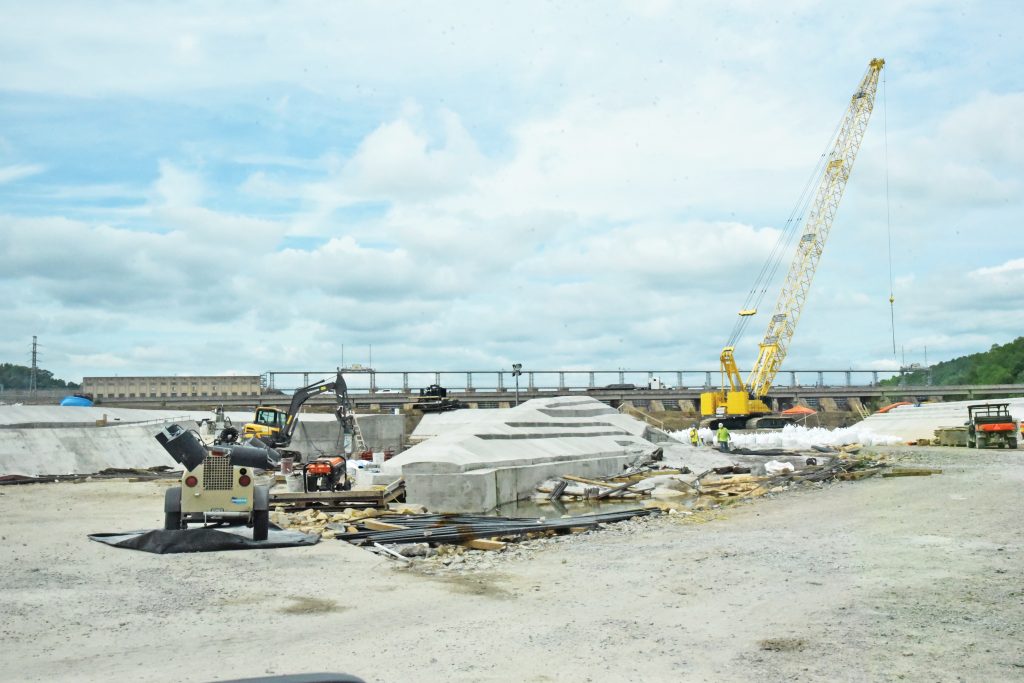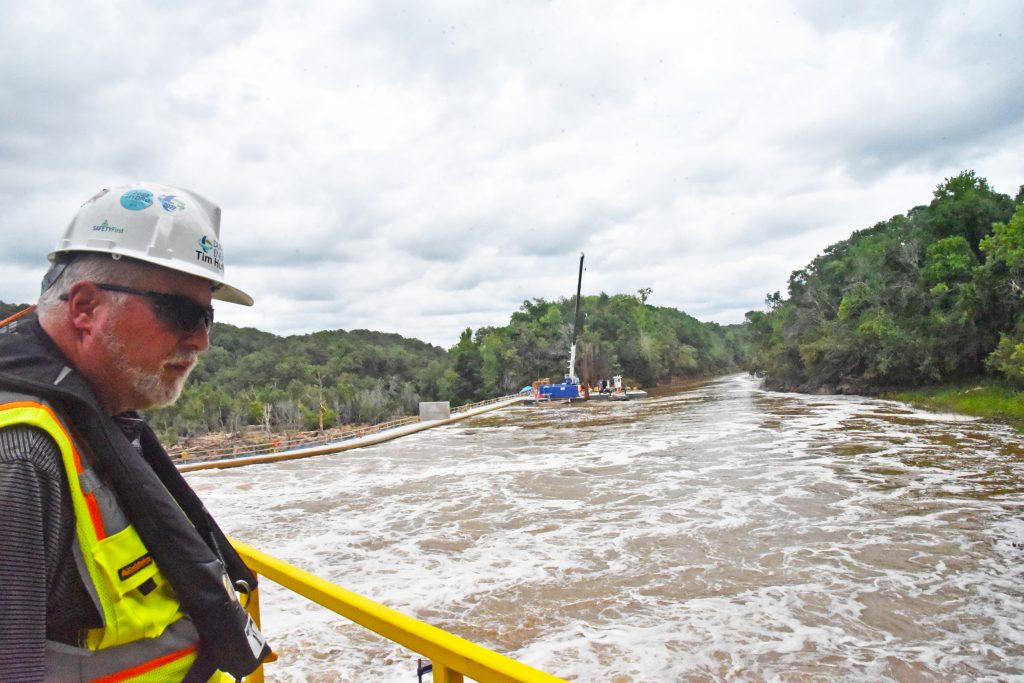
Excerpted with permission from articles by Tobie Nell Perkins (Lancaster News) and Brian Garner (Chester News & Reporter)
GREAT FALLS – For more than a century, the Town of Great Falls has been without its namesake landmark – the Great Falls of the Catawba. The 50-foot waterfall ran dry after its source of water, two converging channels of the Catawba River, were cut off by the construction of two dams in the 1900s.
Now, Duke Energy, partnering with the Town, will return water to the channels and bring wildlife, fishing, canoeing, kayaking and whitewater rafting.
And all that fun will be only about half an hour from Blythewood and even closer to Winnsboro. The whitewater portion of the park is expected to be open by March of 2023.
The two whitewater channels – the long bypass channel and a short bypass channel – are for two very different levels of whitewater rafting experience. The scale for difficulty of rapids goes from Class 0 to Class V, “from flat water to absolute man-crushing danger,” Project Manager Tim Huffman said.

“The long bypass is about 2-1/2 miles and will be classified as Class II and Class III,” Huffman said. “This is the one you go out and have fun on.”
“The rocks lurking in the bed of the short bypass, dry now, provide whitewater challenges for the experienced rafters and kayakers,” Huffman said. “The short bypass, only about three-quarters of a mile long, is Class III and Class IV for more expert paddlers.
Huffman explained that the different classes and types of rapids that paddlers will experience at each site is a function of what the “rock geometry” is like in the two channels.
“God made this whitewater. All we are doing is putting the water back from where it was diverted 120 years ago,” Huffman said. “We’re not making the channels, and we’re not making the channels difficult; they are what they are. We’re just providing the water and a way to access those channels,” said Huffman.

Other recreational improvements planned in the Great Falls area include:
- Dearborn Island State Park: Duke Energy will provide funding to the S.C. Department of Parks, Recreation and Tourism (PRT) to develop a state park on Dearborn Island. Duke Energy will build a pedestrian bridge to the island from the Great Falls canoe/kayak launch and develop a trail to the bridge along with trails on the island.
- Nitrolee Access Area: Duke Energy completed an access area that will be the primary location for accessing Great Falls Reservoir and the bypass channels. Parking and restrooms will be provided as well as a historic interpretive center about the remains of the original Arc Building that was part of the Nitrolee plant in the early 1900s. This site will be connected to the lower Great Falls sites by the Carolina Thread Trail.
- Lower Great Falls Canoe/Kayak Launch: This site will be located near the pedestrian bridge and will provide parking and a canoe/kayak launch for access to the waters in the lower Great Falls Reservoir.
- Canoe/kayak access trails.
Plans to bring nature-based tourism to Great Falls began in 2000, Coleman said.
The return of the waterways is expected to revitalize the community of Great Falls and the surrounding area.











